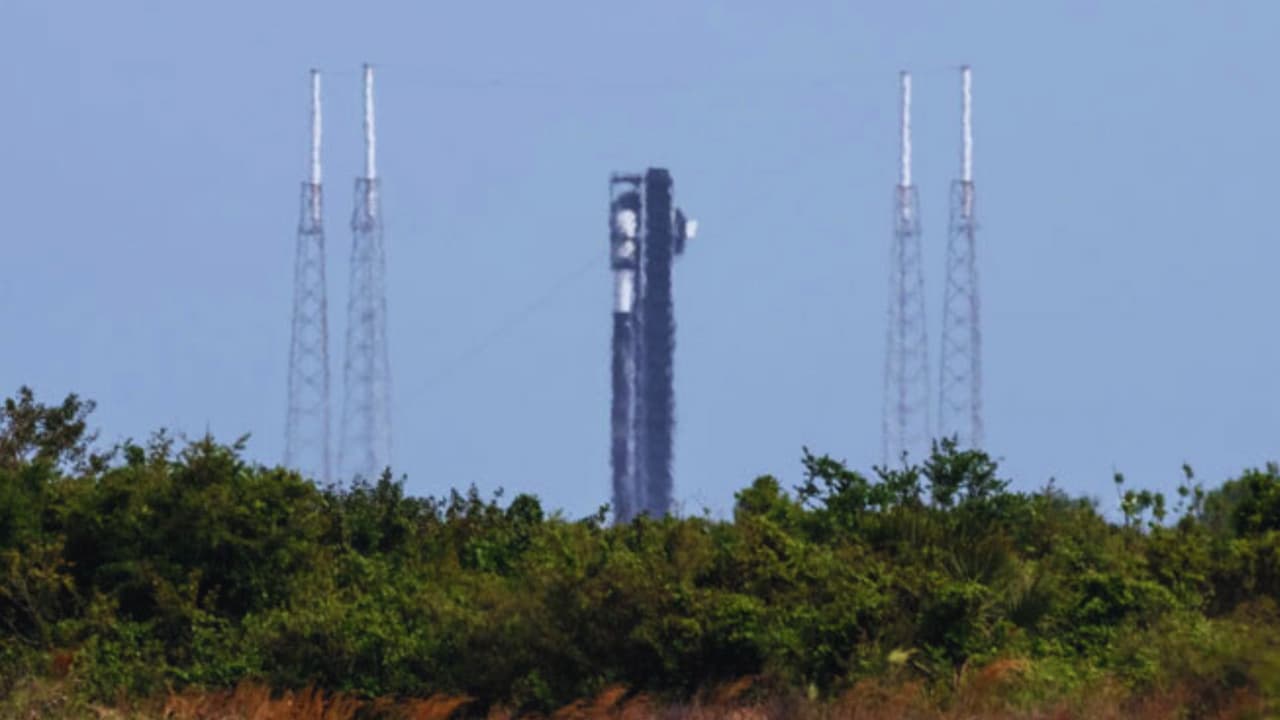SpaceX’s Ambitious Storm: Launching the 68th Starlink Mission Amid Hurricane Challenges
As a dedicated space news reporter, I bring you the latest updates on SpaceX’s groundbreaking developments in satellite deployment. The company is pushing boundaries once again with its upcoming launch, despite weather challenges from Hurricane Oscar.
SpaceX is gearing up for another milestone launch, scheduled for Tuesday, October 22, 2024, at 6:14 p.m. EDT from Cape Canaveral Space Force Station. This marks their 68th Starlink mission of the year, showcasing their relentless pace of space operations.
The launch comes at a challenging time, with Hurricane Oscar lurking in the southeast. Weather forecasters give a 70% chance of favorable conditions, though the storm could affect booster recovery efforts.
The hurricane’s presence has created a strong pressure system over Florida, bringing breezy conditions and increased shower activity along the Space Coast.
In a display of engineering prowess, SpaceX plans to land the first-stage booster on a droneship in the Atlantic Ocean. If successful, this will mark their 280th droneship landing and 357th overall booster recovery—numbers that seemed impossible just a few years ago.
The mission carries special significance as it targets the sixth shell of the Starlink constellation, the first such launch since May 31. But what makes this launch truly newsworthy is the broader context of SpaceX’s expansion plans. The company is seeking FCC approval to operate nearly 30,000 Gen2 Starlink satellites, a massive upgrade to their current system.
Breaking News Update: The FCC has already green-lit some crucial aspects of this expansion. In March, they approved SpaceX’s request to use specific frequency bands for 7,500 Gen2 satellites. This authorization aims to improve broadband service across America, especially in underserved areas.
The numbers tell an impressive story: As of October 20, 2024, Jonathan McDowell, a renowned astronomer and orbital tracker, confirms 6,473 Starlink satellites currently orbit Earth. This fleet includes 4,150 Gen1 and 2,323 Gen2 Mini satellites.
In a timely development, SpaceX is concluding a special coverage period where they provided emergency communications support during Hurricanes Milton and Helene. Their Direct to Cell technology, partnered with T-Mobile in the US and One New Zealand internationally, has proven crucial during these natural disasters.
The company’s recent success with their Starship rocket test flight on October 13, where they achieved their first successful booster catch using the launch tower, adds another layer of capability to their ambitious plans.
As we await tomorrow’s launch, it’s clear that SpaceX continues to push the boundaries of what’s possible in space technology, even in the face of challenging weather conditions. Their rapid launch cadence and expanding satellite constellation represent a new chapter in space exploration and global connectivity.
Stay tuned for live coverage of this historic launch, beginning approximately one hour before liftoff. This is [Your Name], reporting for Space News Daily.
